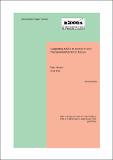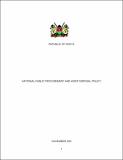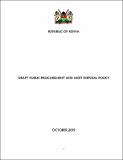| dc.description.abstract | Whereas market access remains a major growth factor, most MSEs in Kenya face formidable market-related constraints. Although the public procurement market is huge, estimated at 9.07 percent of GDP (or Ksh 71 billion), it is dominated by large enterprises at the exclusion of MSEs. It was in view of this fact that Sessional Paper No. 2 of 2005 on Development of Micro and Small Enterprises for Wealth and Employment Creation for Poverty Reduction introduced an affirmative policy of reserving 25 percent of all Government procurement and tenders to the MSE sector. However, this policy proposal is yet to be translated into implementable strategies and guidelines. In addition, it is not supported by an enabling business environment and lacks an accompanying legislation, as is the practice in countries with established affirmative pubic procurement programmes for MSEs. All these shortfalls make it doubtful that MSEs in Kenya would take due advantage of the provisions in the Sessional Paper. This study picks cue from this shortcoming and attempts to tackle the question: How can MSEs be integrated into the public procurement system? There are significant market and institutional failures that discriminate against MSEs in public
procurement. The institutional framework is heavily biased towards attainment of efficiencies, transparency and economy of the process at the expense of mainstreaming MSEs into public procurement market. The legal framework has not significantly changed the barriers to their participation. Specific barriers to MSE participation include technical documentation requirements, slow payment, contract aggregation, costly appeal systems, inaccessibility of procurement information, limited capacity, and tender security, among others. | en |




